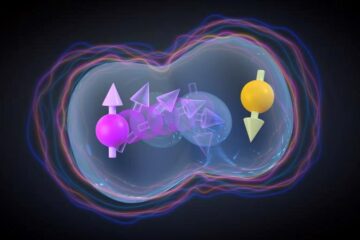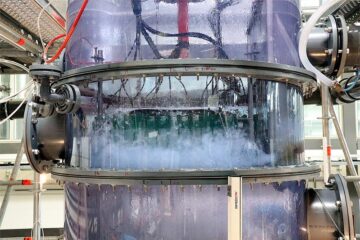New Recombinant Production of Design Rhamnolipids – Optimized Biosurfactant Fermentation Process

Biosurfactants have attracted increasing interest since they show a number of advantages over surfactants of petrochemical origin in terms of ecological acceptance, low toxicity and sustainability. Biosurfactants also have a huge application potential, for example in chemical and pharmaceutical industry or as emulsifier in cosmetics and foods.
Among the best established biosurfactants are the rhamnolipids. Rhamnolipids are glycosides with one (mono-rhamnolipid) or two rhamnose-units (di-rhamno-lipid) as the glycon portion and one to three β-hydroxy-fatty acid moieties as the aglycon portion. Rhamnolipids are naturally produced by two rhamnosyl-transferases encoded by rhlA, rhlB and rhlC by the opportunistic pathogen Pseudomonas aeruginosa. The rhlA and rhlB genes form an operon, encoding subunits A and B of rhamnosyltransferase 1, while rhlC encodes rhamnosyltransferase 2. In particular, the present invention provides a genetically modified non-pathogenic host cell that may be employed for production of favoured rhamnolipids in high yields. Use of the modified host cell allows selective production of various rhamnolipids, e.g. mono- or dirhamnolipids and a various length of fatty acids. As a first example, a bacterial host cell includes a rhlA gene, a rhlB gene or orthologs thereof. The genes are under the control of a heterologous promoter. In a further embodiment, the host cell may preferably also contain a rhlC gene, or an ortholog thereof. The biotechnical production process is in addition optimized at varying temperature conditions.
Weitere Informationen: PDF
PROvendis GmbH
Tel.: +49 (0)208/94105 10
Ansprechpartner
Dipl.-Ing. Alfred Schillert
Media Contact
Alle Nachrichten aus der Kategorie: Technologieangebote
Neueste Beiträge

Experiment öffnet Tür für Millionen von Qubits auf einem Chip
Forschenden der Universität Basel und des NCCR SPIN ist es erstmals gelungen, eine kontrollierbare Wechselwirkung zwischen zwei Lochspin-Qubits in einem herkömmlichen Silizium-Transistor zu realisieren. Diese Entwicklung eröffnet die Möglichkeit, Millionen…

Stofftrennung trifft auf Energiewende
Trennkolonnen dienen der Separation von unterschiedlichsten Stoffgemischen in der chemischen Industrie. Die steigende Nutzung erneuerbarer Energiequellen bringt nun jedoch neue Anforderungen für einen flexibleren Betrieb mit sich. Im Projekt ColTray…

Kreuzfahrtschiff als Datensammler
Helmholtz-Innovationsplattform und HX Hurtigruten Expeditions erproben neue Wege in der Ozeanbeobachtung. Wissenschaftliche Forschung nicht nur von speziellen Forschungsschiffen aus zu betreiben, sondern auch von nicht-wissenschaftlichen Schiffen und marinen Infrastrukturen –…

















